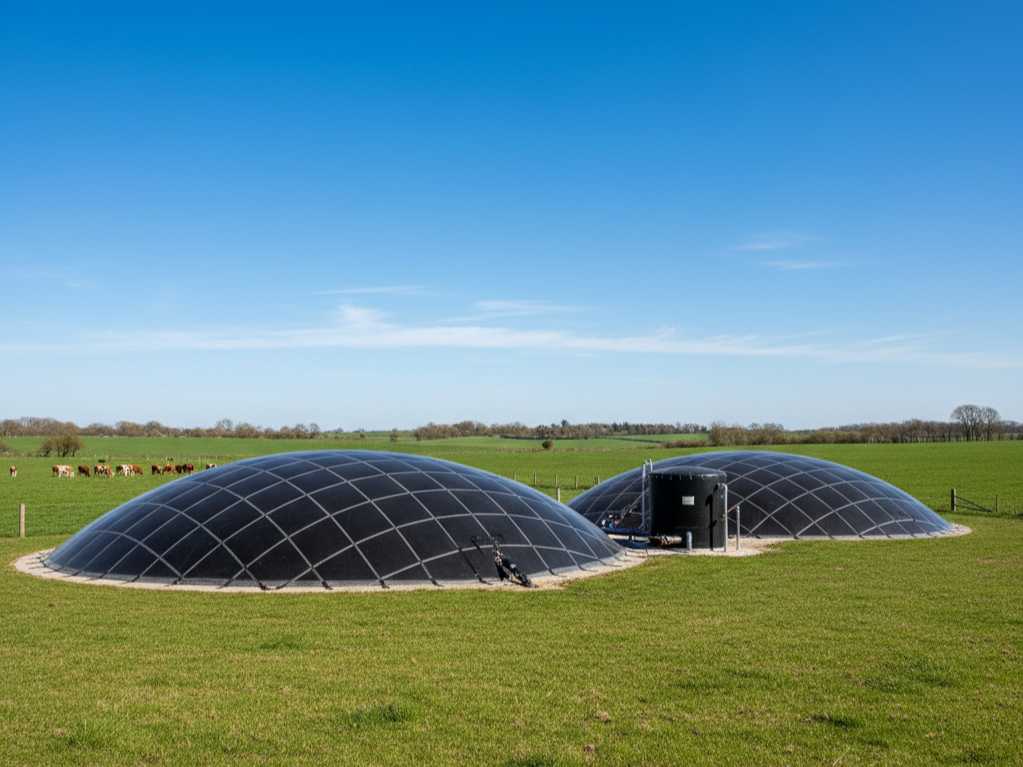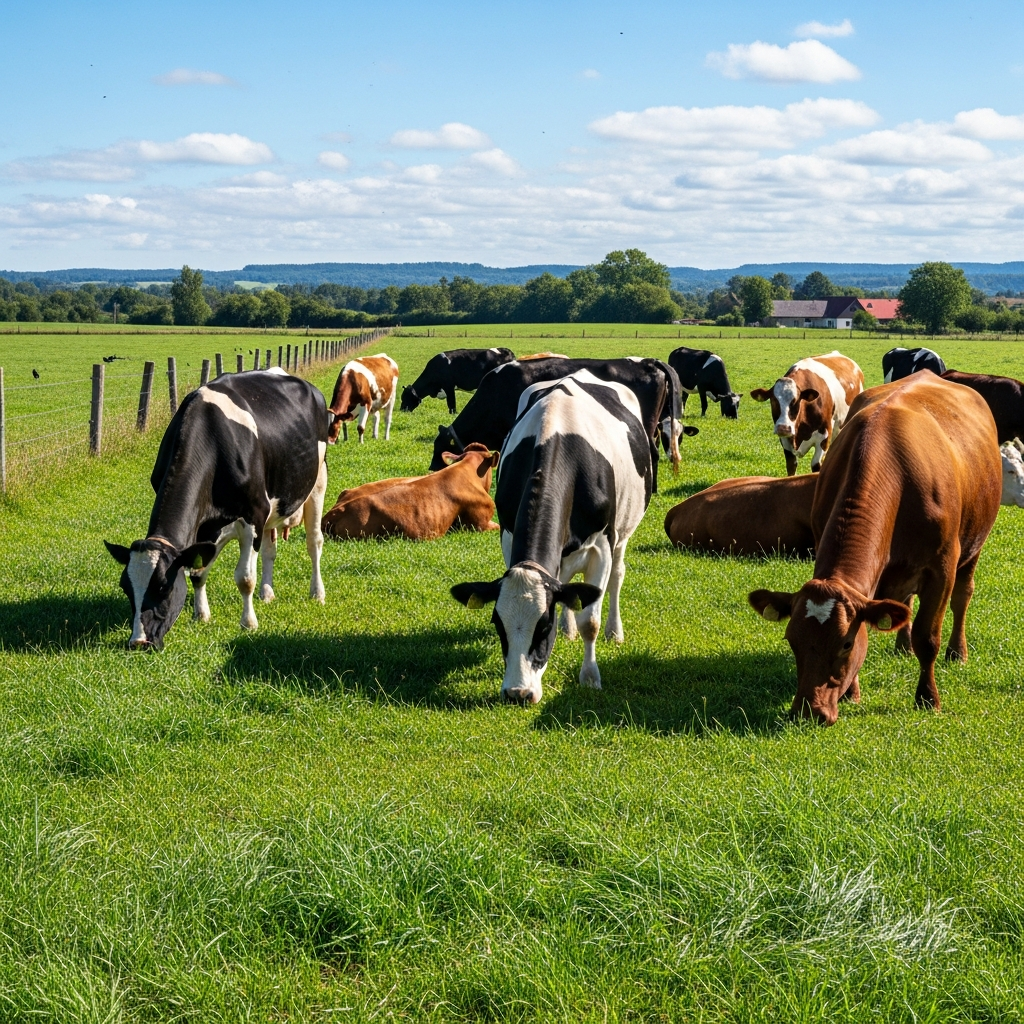Slurry-fed anaerobic digestion on UK farms: opportunities, challenges and how to make it work
Across the UK, interest in farm-scale anaerobic digestion is growing rapidly. Slurry is plentiful, on-site and available year-round, offering farmers a dependable feedstock and a cost-effective path to renewable energy.
Yet only a small portion of the slurry produced on British farms currently goes through AD plants. This untapped potential is driving the rise of slurry-fed and slurry-led projects, positioning them as a major opportunity for both energy generation and emissions reduction.
Why slurry-fed AD is gaining momentum?
Slurry-based AD systems deliver multiple benefits. They cut fertiliser costs and stabilise nutrients resulting in improved nutrient efficiency through timed applications. Managed correctly, they also reduce ammonia emissions compared with raw slurry spreading.
On the energy side, AD provides renewable heat and power for on-farm use, while gas upgrading opens the door to biomethane injection where viable. Larger plants can export energy, whereas smaller farms often benefit most from self-consumption. For off-grid sites, virtual pipeline solutions are now emerging as an alternative to grid connection.
Policy support is strengthening this growth. The Green Gas Support Scheme (GGSS) remains open to new biomethane projects until March 2028, incentivising sustainable gas generation. Meanwhile, grants such as the Slurry Infrastructure Grant in England help farmers upgrade storage, covers, and handling systems—key to both compliance and feedstock reliability. While these grants don’t fund AD equipment directly, they build the foundation for successful on-farm AD operations.
Making slurry work: co-digestion and process balance
Slurry alone can produce biogas, but its low dry matter content limits overall yield. To boost performance, many operators use co-digestion by combining slurry with higher-energy residues like silage effluent or food waste. This approach increases methane production and balances the carbon-to-nitrogen (C:N) ratio, helping to avoid ammonia inhibition. Unbalanced feedstocks can disrupt the digestion process, especially under higher temperatures or pH levels, so careful recipe management is essential.
Start with the basics: measure your herd’s output. A typical dairy cow produces around 20–25 tonnes of slurry annually. These figures guide plant sizing and determine whether to rely solely on slurry or introduce co-feedstocks. Monitor the presence of sand, grit, and fibre, as these materials can reduce digester capacity and damage pumps.
Separation systems help manage fibre and create a liquid fraction that’s easier to handle and spread. Matching hydraulic retention time (HRT) and organic loading rate (OLR) to your slurry’s characteristics ensures stable operation and consistent energy yield.
Permitting and planning: small-scale doesn’t mean simple
Even small AD plants face complex regulatory requirements. Because slurry is classed as a waste feedstock, your project may require an exemption, a standard rules permit, or a bespoke permit depending on its size and throughput. Some compact, high-throughput systems fall outside standard exemptions, pushing costs higher. Engaging regulators early helps you understand the right pathway and avoid costly delays.
Site selection also matters. You need to consider proximity to homes, watercourses and air quality zones. If you plan to use combined heat and power (CHP), assess combustion emissions from the start.
Managing emissions and nutrient value
Anaerobic digestion should be viewed as part of a wider farm system, not a standalone solution. Its real impact comes when storage tanks are covered, pipework is gas-tight, and digestate is handled responsibly. Good design and management reduce odours, ammonia losses, and microplastic risks.
Apply digestate using low-emission equipment such as trailing shoe or injection systems, and time applications to crop demand. Align your nutrient plan with NVZ regulations and the Farming Rules for Water to maximise value and maintain compliance.
Energy routes and revenue potential
Many slurry-fed AD plants prioritise self-sufficiency, using CHP to generate heat and power for milking parlours, grain drying, or space heating. Others explore biomethane upgrading, which can offer greater long-term returns, especially when grid or virtual pipeline connections are viable.
To qualify for GGSS payments, operators must demonstrate sustainability and robust lifecycle emissions data. With ongoing debate around biomethane’s role in the UK energy mix, focusing on hard-to-electrify uses such as transport or industry may prove most profitable. Building flexibility into your revenue strategy helps future-proof your investment.
A practical checklist for farmers
Assess your resources - Quantify slurry volumes by livestock class and season. Measure dry matter and volatile solids to understand energy potential.
Optimise your recipe - Maintain a balanced C:N ratio, adjust loading rates, and monitor process stability. Remove grit and maintain key equipment.
Plan your energy strategy - Compare on-site CHP with biomethane injection. Ensure compliance with GGSS sustainability criteria.
Secure your permits - Identify which permit type applies early and plan for site-specific constraints.
Upgrade your infrastructure - Invest in covered storage and compliant spreading systems. Explore available grant schemes.
Monitor performance - Track pH, alkalinity, VFAs, and methane yield. Use laboratory data to fine-tune operations.
Work with BIOCON Group
BIOCON Group helps farms across the UK unlock the energy potential of slurry. From feasibility studies and regulatory guidance to full-scale AD design and optimisation, our experts support every stage of development.
Interested in exploring slurry-fed AD for your farm?
Book a Slurry AD Feasibility Review to discuss your feedstock potential, commercial options, and energy goals.



